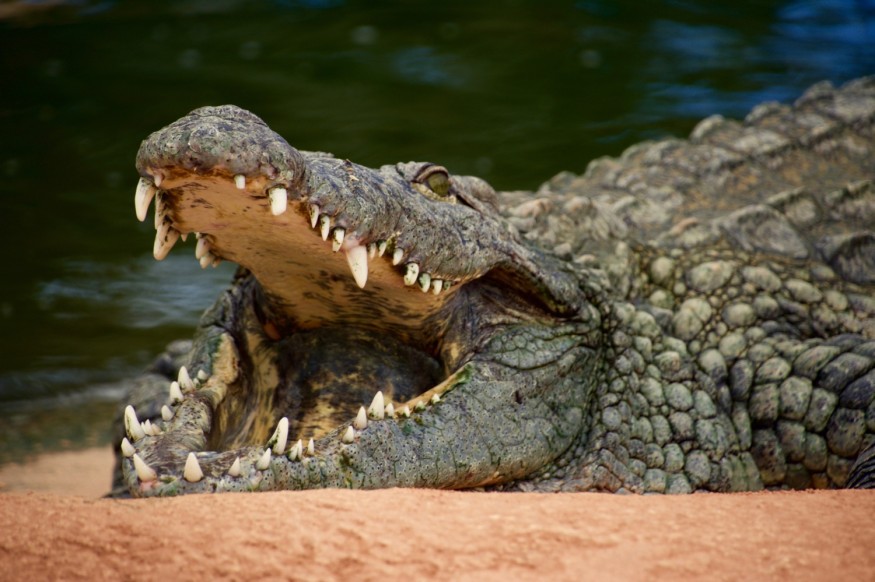
Some animals enjoy being part of the military, including dogs, bottlenose dolphins, carrier pigeons, and elephants. All have played a role in serving the military. But there are also surprise visitors who crawl on their bellies and wear out their welcome like the crocodile found on one of the runways at Naval Air Station Key West in Florida, making it a suitable spot to sunbathe.
NAS Key West had removed the stubborn crocodile from its airfield with the help of experts so planes could take off and land. Crocodiles were seen doing the same within the area, but none were in the airfield, except for the one that made the headlines. What does basking under the sun do for these cold-blooded reptiles?
Sunbathing 7-Foot Crocodile Blocks Navy Airfield: Why Do These Reptiles Bask Under the Sun?
Meet Conchita, the Sunbathing Crocodile
On March 10, the Navy noticed an unexpected visitor basking in the spring sunshine on one of their runways, Task and Purpose reported. The Navy shared a photograph of the reptile with a Super Hornet fighter jet in the background on Facebook in which they wrote: "This airfield resident was soaking up some sun on one of our runways recently and didn't want to budge."
NAS Key West spokesperson Danette Baso Silvers said that there are six or seven crocodiles that live on the base, but they normally sun themselves in the grassy areas off the runways, unlike this crocodile who seems to have other ideas and temporarily took over the largest runway in the base.
He added that the presence of the crocodile on the runway forced flight operations to shift to a different runway as it was so stubborn and refused to move or give way. The resident United States Department of Agriculture wildlife biologist of the base, Rosa Gonzalez, called for assistance from the Florida Fish and Wildlife Conservation (FWC) to help remove the reptile and transfer her to the fenceline.
According to the authorities, it was a female crocodile, measuring about seven feet long and weighing 110 pounds. Wildlife officials have allowed Gonzalez to name her, and she chose the name Conchita, owing to the fact that people from Key West are called conchs.
Sunbathing Behavior of Crocodilians Explained
The International Union for Conservation of Nature's (IUCN) Crocodile Specialist Group explains that crocodilian species cannot maintain a constant body temperature on their own, unlike mammals and birds, that is why they are referred to as cold-blooded animals by biologists and wildlife experts.
For that reason, crocodiles and alligators work on achieving their body temperature at around 30-33 degrees Celsius by moving back and forth between warm and cool parts of their environment. During the winter season, they bask in the sun to warm themselves. However, they also look for shade and cool areas during summer to avoid overheating.
While basking under the sun, crocodilians would orient themselves in such a way to maximize exposure. They often face the sun while warming to reduce the uptake by the relatively small head while their body continues to heat up.
They also usually open their mouths to allow the brain to cool through evaporative cooling. They display the same behavior at night when it is raining.
Behavioral body temperature regulation among crocodilians is remarkable as it allows them to withstand prolonged periods of cool weather without the need for food to regulate their temperature.
RELATED ARTICLE : 14.5-Foot Enormous, Mega Star Saltwater Crocodile Known as Scarface Spotted Chilling in Queensland Creek
Check out more news and information on Crocodiles in Science Times.
© 2025 ScienceTimes.com All rights reserved. Do not reproduce without permission. The window to the world of Science Times.












